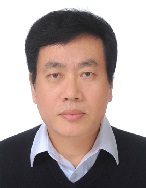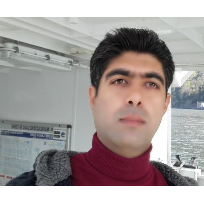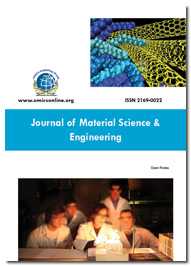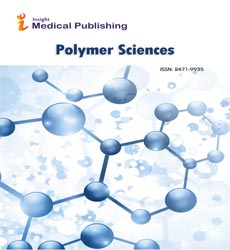Theme: “Scientific platform to discuss advancements in polymer chemistry and its applications.â€
Euro Polymer Chemistry 2019
Polymer Chemistry conferences invite all the participants from all over the world to attend “5th International Conference and Exhibition on Polymer Chemistry’’ during May 06-07, 2019 Amsterdam, Netherlands which includes prompt keynote presentations, Oral talks, Poster presentations and Exhibitions.
While much research and development in industry is product oriented, it requires scientists with a grasp of the foundations of chemistry, creativity, the ability to work together, and enjoy seeing the practical challenges encountered and solutions adopted in the fields of Polymer Chemistry. Euro Polymer Chemistry 2019 covers all the aspects of related field researchers, The forum of Scientists, and students from all corners of the globe, come together to discuss about polymer science and its advances. It also provides a premier interdisciplinary platform for researchers, practitioners and educators to present and discuss the most recent innovations and trends. Conference Series LLc Ltd. `Conferences has taken the initiation to gather the world class experts both from academic and industry in a common platform at Euro Polymer Chemistry 2019.
Why to attend our Conference
It promotes the positive contributions of Polymers to help raise awareness and correct misconceptions
This experience helps the Conference to be an interactive forum and encourages a strong level of dialogue and discussion, thus maximizing the benefits of attendance. Each session of the meeting will be included with expert lectures, poster and discussions, join us to design sustainable development processes, advances the business and sustainability in drug production for further health care protection of lives. We are glad to invite you on behalf of organizing committee to join us, where you are the decision maker for future.
The conference will be comprised of sessions on recent development in polymer sythesis, biodegradable polymers, nanopolymers, supramolecular polymers, application of polymers, and many more. Euro Polymer Chemistry 2019 comprises of international symposiums, B2B meetings, workshops thereby leading to intenses discussions on all the major topics of Polymer Chemistry and its interrelated fields.
A Unique Opportunity for Advertisers and Sponsors at this International event.
Target Audience for Polymer Chemistry 2019:
Eminent Scientists/ Research Professors in the field of polymer chemistry, Junior/Senior research fellows, Students, Directors of polymer research companies, Chemical Engineers, Members of different physics and Chemistry associations.
Track 1:- Recent Developments in Polymer Synthesis
In application prospects and performance characteristics and in property range and diversity, polymers offer novelty and versatility that can hardly be matched by any other kind of materials. Polymers are huge macromolecules composed of repeating structural units called monomers. Polymer developments not only include synthesis but also its structural –functional relationship, polymer bio conjugation, and novel polemerization methods.In Polymerization, many monomers are joined together in a chemical reaction to form macromolecules of different sizes and shapes. Polymers are popular in everyday life - from plastics and elastomers on the one side to natural biopolymers such as DNA and proteins on the other hand.
Track 2: Polymer Design and Reaction
In Polymer Chemistry, Polymerization is a process in which relatively small molecules, called monomers, combine chemically to produce a very large chainlike or network molecule, called a polymer. The two major types of polymerization are addition polymerization and condensation polymerization. Polymerization reactions proceed via either cationic or free-radical mechanisms. This process occurs via a different reaction mechanism depending on functional groups present in reacting compounds and its steric hindrance. Stable molecules like alkenes due to sigma bonding between its carbon atoms, form polymers through relatively simple radical reactions; in contrast to those that involve complex synthesis due to substitution at the carbonyl group of reacting molecules.
Track 3: Structure and Dynamics in Polymer Colloids
Polymer colloids are dispersions of polymer particles in a continuous liquid (mostly aqueous) phase. Particle diameters can be between 20 and 2000 nm. Some polymer colloids, such as rubber latex, occur naturally but many of them are made synthetically. Polymer colloids can be made directly via emulsion polymerization whereby a monomer(s) is polymerized via a free radical polymerization process in an aqueous medium in the presence of a stabilizer system but it is also possible to make the colloids from pre-formed polymers by using processes such as phase inversion or precipitation. The application areas for polymer colloids are diverse, including their use as binders in non-woven fabrics and paper coatings, in synthetic rubbers, in interior and exterior paints, in adhesives, as impact modifiers in toughened plastics, as catalytic supports, in a number of medical diagnostic areas etc. This session presents an overview of the preparation, characterization, and applications of polymer colloids, as well as advancements and future challenges in this field.
Track 4:- Polymer engineering and technology
Polymer engineering and technology is part of the growing field of materials engineering that focuses on plastics and other polymers. Polymer Engineering is generally an engineering field that designs, analyses, and/or modifies polymer materials. The prediction of their behavior depends on our understanding of these complex systems .It is the amalgamation of Polymer Science with Chemical Engineering. polymer processing techniques requires molecular modeling techniques. Beside metals and ceramics, the recent developments of Polymer Technology have revolutionized the field of material science by increasing the use of polymer based substances from building materials to Packing materials, Fancy decoration articles, Communications, Automobile, Aircrafts, etc. Synthetic polymers have since a long time played a relatively important role in present-day medicinal practice. Polymers are now a major materials used in many industrial applications.
Track 5: Polymer Physics and Characterizations
Polymer Physics is the field of physics that reviews polymers, their variances, mechanical properties, as well as the kinetics of reactions involving degradation and polymerization of polymers and monomers respectively. It centers around the perspective of condensed matter physics. Polymer Characterization includes determining molecular weight distribution, the molecular structure, the morphology of the polymer, Thermal Properties, mechanical properties, and any additives. Molecular Characterization also includes the development and refinement of analytical methods with statistical models which help to understand phase separation and phase transition of polymers.
Track 6:- Biodegradable polymers
Biodegradable polymers are defined as Polymers comprised of monomers linked to one another through functional groups and are broken down into biologically acceptable molecules that are metabolized and removed from the body via normal metabolic pathways. The development of biodegradable polymer composites promotes the use of environmentally friendly materials. Most in the industry use the term bioplastic to mean a plastic produced from a biological source. All petroleum-based plastics are technically biodegradable. Biodegradable Polymers can also use to control the drug release rate from the formulations. Current and future developments in biodegradable polymers and renewable input materials focus relate mainly to the scaling-up of production and improvement of product properties resulting in increased availability and reduction in prices.
Track 7:- Functional Polymers and its Applications
Functional polymers are macromolecules to which functional groups are attached which can be utilized as reagents, catalysts, protecting groups, etc. The use of functional polymer rest on the physical properties of support and the chemical constitution of the attached functional group. The polymer support may be organic or inorganic. Polymer backbone plays a crucial role in performance of functional polymers. A polymer to be used as a support should have significant mechanical stability under the reaction conditions. Such properties of the support play important role in functionalization reactions of polymers .The polymer properties can be modified either by chemical or by changing the physical nature of the polymers. They are cost effective, non-toxic, recycled and thus mediate environment friendly chemistry. This session talks about the modification of polymer backbones, design of functional polymers, its advantages and limitations as well as its various applications.
Track 8: Catalysts for Polymerization
Polymer Catalysis has become an independent and thriving branch of chemistry. Extensive development of this field is attributed to success achieved in synthesis and investigation of so-called functional polymers as well as to success attained in homogeneous, metal complex catalysis. This has led to the novel idea of heterogenization of homogeneous metal complex catalysts. While the chemical, economic and social advantages of bio catalysis over traditional chemical approaches were recognized a long time ago, their application in industrial production processes have been recently break-through in modern biotechnology (such as robust protein expression systems, directed evolution etc).
Track 9: Diffusion in Polymers
Some polymers are pervious, whilst ceramics, metals, and glasses are generally impassable. Diffusion of small molecules through the polymers plays a major role in different scientific and engineering fields such as medicine, textile industry, membrane separations, packaging in food industry etc. Mass transfer through the polymeric membranes including dense and porous membranes relies upon the components includes solubility and diffusivity of the penetrant into the polymer, morphology, fillers, and plasticization. For instance, polymers with high crystallinity usually are less penetrable because of the porosity of crystallites. In the case of nanocomposites, the penetrants cannot diffuse through the structure directly as they are confined. This session centers around the theory and methodology of diffusion process, factors affecting them, thermodynamics of polymer blend, mass transfer across the interface etc.
Track 10:- Nanopolymers and Nanotechnology
Nanotechnology is among the most recent research regions and it is characterized as building machines at the sub-atomic scale and includes the control of materials on a nuclear (around two-tenths of a nanometer) scale. It is the science and innovation of little things (under 100 nm in size).This clearly incorporates Polymer Nanotechnology which incorporate microelectronics, polymer-based biomaterials, Nano drug, Nano emulsion particles; polymer bound impetuses, electro spun nano creation and so on. A polymer or copolymer material containing scattered nanoparticles is Nanopolymer .The progress from smaller scale to nano-particles prompt change in its physical and in addition compound properties. Nano composites have turned into an unmistakable region of momentum innovative work. Polymer Nano composites (PNC) is a superior materials which comprise of a polymer or copolymer having nanoparticles or nanofillers scattered in the polymer network and devours 90% of generation of plastics. These might be of various shape (e.g., platelets, filaments, spheroids), however no less than one measurement must be in the scope of 1– 50 nm. It is considered as the materials of the 21st century because of its surprising property blends and extraordinary outline conceivable outcomes.
Track 11:- Supramolecular polymers
Kinds of polymers whose monomeric units are held together via highly directional and reversible non-covalent interactions are called Supramolecular Polymers. Non-covalent interactions include hydrogen bonding, π-π interaction, metal coordination, and host-guest interaction. Supramolecular polymers raise from both a fundamental and applied perspective, which in recent years has brought a deep understanding of their physicochemical properties and advanced functionalities.
The session will feature a wide range of topical discussions, highlighting important fields such as Nano machines, meso-scale self-assembly, controlled supramolecular polymerization. A particular focus will be given to the complexity in self-assembly processes and how it can result in novel functions. Small increases in temperature reduces the viscosity by a large extent that allows the materials to be easily processed, and will be useful for several applications. It will become an integral part of the general field of self-assembling polymers, and will find applications in areas ranging from electronics to medicine.
Track 12: Biopolymers and Biomaterials
A biomaterial is any substance that has been engineered to interact with biological systems for a medical purpose - either a therapeutic (treat, augment, repair or replace a tissue function of the body) or a diagnostic one. They may be of natural origin or synthesized in a laboratory. Advanced polymeric Biomaterials proceed to serve as a cornerstone of new scientific applied sciences and therapies. The good sized majority of these materials, each natural and synthetic, interact with biological depend besides direct digital communication. However, biological systems have evolved to synthesize and employ naturally-derived materials for the technology and modulation of electrical potentials, voltage gradients, and ion flows. Bioelectric phenomena can be interpreted as strong signalling cues for intra- and inter-cellular communication. These cues can serve as a gateway to link artificial units with biological systems. Specific focal point will be granted to the use of natural and synthetic biological substances as necessary aspects in applied sciences such as thin film electronics, in vitro cell culture models, and implantable medical devices. Future views and emerging challenges will also be highlighted.
Track 13: Polymer Science -The Future
Polymer science or macromolecular science is a subfield of materials science concerned with polymers, primarily synthetic polymers such as plastics and elastomers. The field of polymer science includes researchers in multiple disciplines including chemistry, physics, and engineering. The foremost challenges in the upcoming decades will be the increase in population, the concentration of people in expansive urban centers, and globalization, and the expected change of climate. Hence, the main concerns for humans in the future will be energy & resources, food, health, mobility & infrastructure and communication. There is no doubt that polymers will play a key role in finding successful ways in handling these challenges. Polymers will be the material of the new millennium and the production of polymeric parts i.e. green, sustainable, energy-efficient, high quality, low-priced, etc. will assure the accessibility of the finest solutions round the globe.
Track 14: Applications of Biopolymers
Polymers are a highly diverse class of materials which are available in all fields of engineering from avionics through drug delivery system, bio-sensor devices, Holography, 3D printing, tissue engineering, cosmetics etc. and the improvement and usage of these depends on polymer applications. Polymers are used in different day to day applications like domestic plastics, pipes, bags, wires, etc. The below average cost and ease of manufacture of polymeric materials makes it more useful in todays world. This in turn fuels further development in research. Knowledge of materials which are optimal for each polymer application allows accurate prediction of its behavior and performance.
Track 15: Future Market of Polymers
The marketing mix is an important part of the marketing of polymers and consists of the marketing 'tools' you are going to use. But marketing strategy is more than the marketing of mixed polymers and plastics. The marketing strategy sets your marketing goals, defines your target markets and describes how you will go about positioning the business to achieve advantage over your competitors. The marketing mix, which follows from your marketing strategy, is how you achieve that 'unique selling proposition' and deliver benefits to your customers. When you have developed your marketing strategy, it is usually written down in a marketing plan. The plan usually goes further than the strategy, including detail such as budgets. You need to have a marketing strategy before you can write a marketing plan. Your marketing strategy may serve you well for a number of years but the details, such as budgets for marketing activities, of the marketing plan may need to be updated every year.
Euro Polymer Chemistry 2018 Report
The 4th International Conference on Polymer Chemistry was held on June 25-27, 2018 in Stockholm, Sweden with the presence of professional researchers, scientists involved in the development of high-quality education & research in all aspects.
Polymer Chemistry 2018 witnessed an amalgamation of peerless speakers who enlightened the crowd with their knowledge and confabulated on various topics related to the field of Polymer Chemistry. The highly exalted conference hosted by Polymer Chemistry Conferences was marked with the attendance of renowned and brilliant researchers, business delegates and talented student communities representing more than 20 countries around the world. The conference has tried grounding every aspect related to Polymer Chemistry, covering all the possible research areas.
The conference aimed a parallel rail with theme “Polymer Chemistry: Creating Big Ideas in Science”. The meeting engrossed a vicinity of cognizant discussions on
- Recent Developments in Polymer Synthesis
- Advanced Polymer Characterization,
- Supramolecular Polymers
- Biodegradable Polymers
- Biopolymers
- Polymer Engineering and Technology
- Functional Polymer and its Applications
- Bioplastics
- Polymer Blends
- Polymer and Microfluidics
- Nanopolymers and Nanotechnology
- Polymer Electronics and Optics
- Application of Polymers
- Future Scope of Polymer Science.
The three days event implanted a firm relation of upcoming strategies in the field of Polymer Chemistry with the scientific community. The conceptual and applicable knowledge shared, will also foster organizational collaborations to nurture scientific accelerations.
We are thankful to all our speakers for encouraging and supporting us to conduct the conference and catapulting the same to pinnacle of success.
The Organizing Committee would like to thank the moderator: Jaroslav Minar, University of Chemistry and Technology, Czech Republic for his valuable contribution which resulted in smooth functioning of the conference.
We would also like to thank our Poster judge Hanying Zhao, Nankai University, China for the evaluation of Poster Presentations.
The meeting was embarked with an opening ceremony followed by Keynote Sessions and followed by series of lectures delivered by Honorable Guests and members of the Keynote forum. The highlights of the meeting were the eponymous lectures, delivered by:
Adam Quintana, University of New Mexico, USA
Ayan Samanta, Uppsala University, Sweden
Bernabe L. Rivas, University of Concepcion, Chile
Byung Gil Min, Kumoh National Institute of Technology, Korea
Dongmei Cui, Changchun Institute of Applied Chemistry-CAS, China
Eri Yoshida, Toyohashi University of Technology, Japan
Fogorasi Magdalena Simona, Aurel Vlaicu University of Arad, Romania
Hanying Zhao, Nankai University, China
Jaroslav Minar, University of Chemistry and Technology, Czech Republic
Karin Larsson, Uppsala University, Sweden
Krishnasamy Balaji, PSG Institute of Technology and Applied Research, India
Marlus Chorilli, UNESP—Universidade Estadual Paulista, Brazil
Oomen P Oommen, Tampere University of Technology, Finland
Payam Hayati, Islamic Azad University, Iran
Sanboh Lee, National Tsing Hua University, Taiwan
Sang Youl Kim, Korea Advanced Institute of Science and Technology, Korea
Sevinc Ilkar Erdagi, Kocaeli University, Turkey
All of them provided their fruitful contributions in the form of highly informative presentations and made the conference a top notch one.
Polymer Chemistry conferences is prerogative to thank the Organizing Committee Members, Keynote speakers and Chairs on transcribing the plenary sessions and workshop in a diversified and variegate manner to make this conference an enviable artifact.
We also express our sincere thanks to all the media partners for the promotion of our event to glory.
With the grand success of Polymer Chemistry 2018, we are glad to announce our next upcoming conference “5th International Conference on Polymer Chemistry” which is going to be held in Amsterdam, Netherlands during May 06-07, 2019.
Bookmark your dates…
Hoping to meet you again coming year at Amsterdam!!!
Conference Highlights
- Recent Developments in Polymer Synthesis
- Polymer Design and Reaction
- Structure and Dynamics in Polymer Colloids
- Polymer Engineering and Technology
- Polymer Physics and Characterizations
- Biodegradable Polymers
- Functional Polymers and its Applications
- Catalysts for Polymerization
- Diffusion in Polymers
- Nanopolymers and Nanotechnology
- Supramolecular Polymers
- Applications of Biopolymers
- Future Market of Polymers
- Polymer Science -The Future
- Biopolymers and Biomaterials
To share your views and research, please click here to register for the Conference.
To Collaborate Scientific Professionals around the World
| Conference Date | May 06-07, 2019 | ||
| Sponsors & Exhibitors |
|
||
| Speaker Opportunity Closed | |||
| Poster Opportunity Closed | Click Here to View | ||
Useful Links
Special Issues
All accepted abstracts will be published in respective Our International Journals.
Abstracts will be provided with Digital Object Identifier by



























